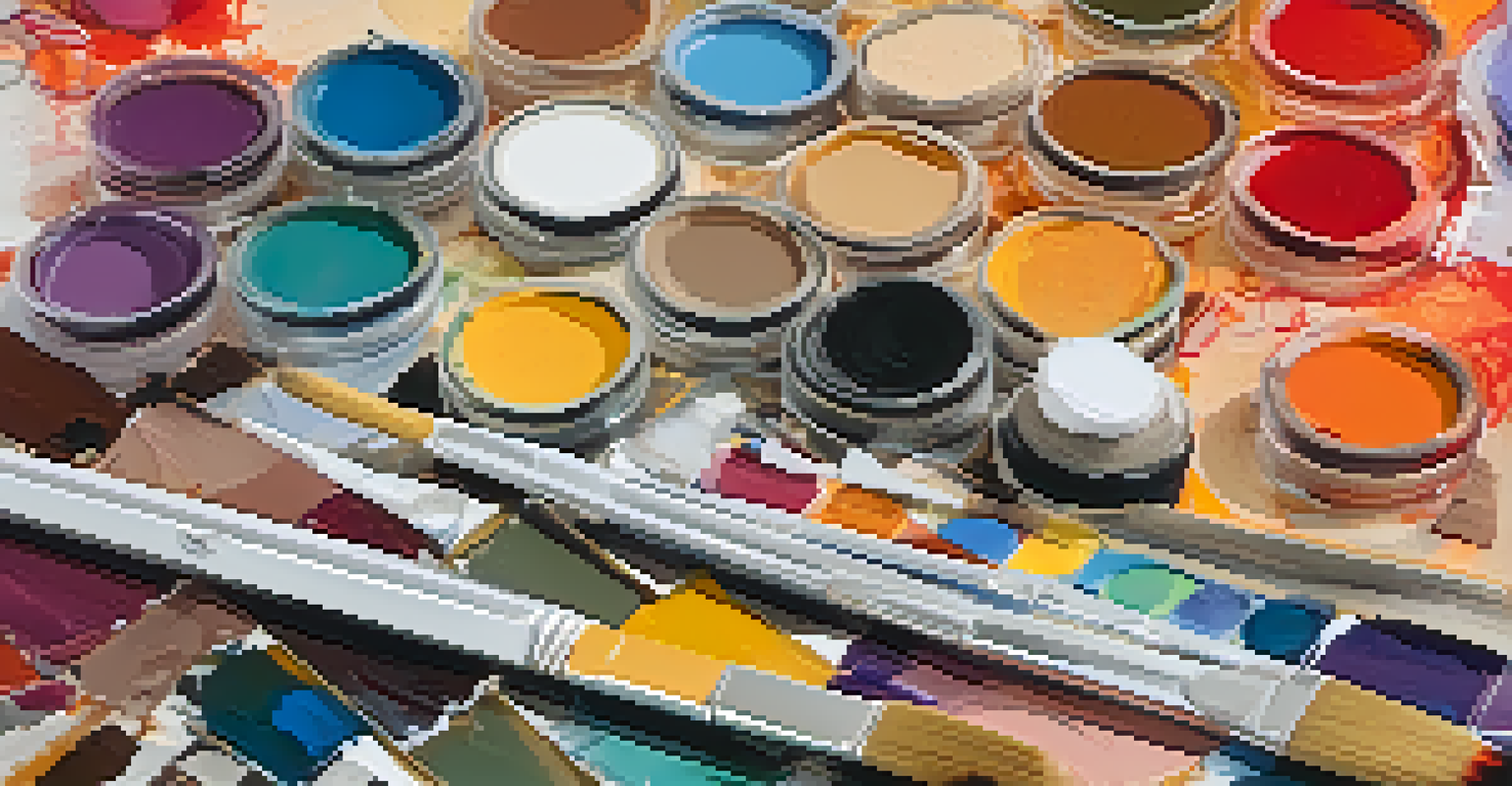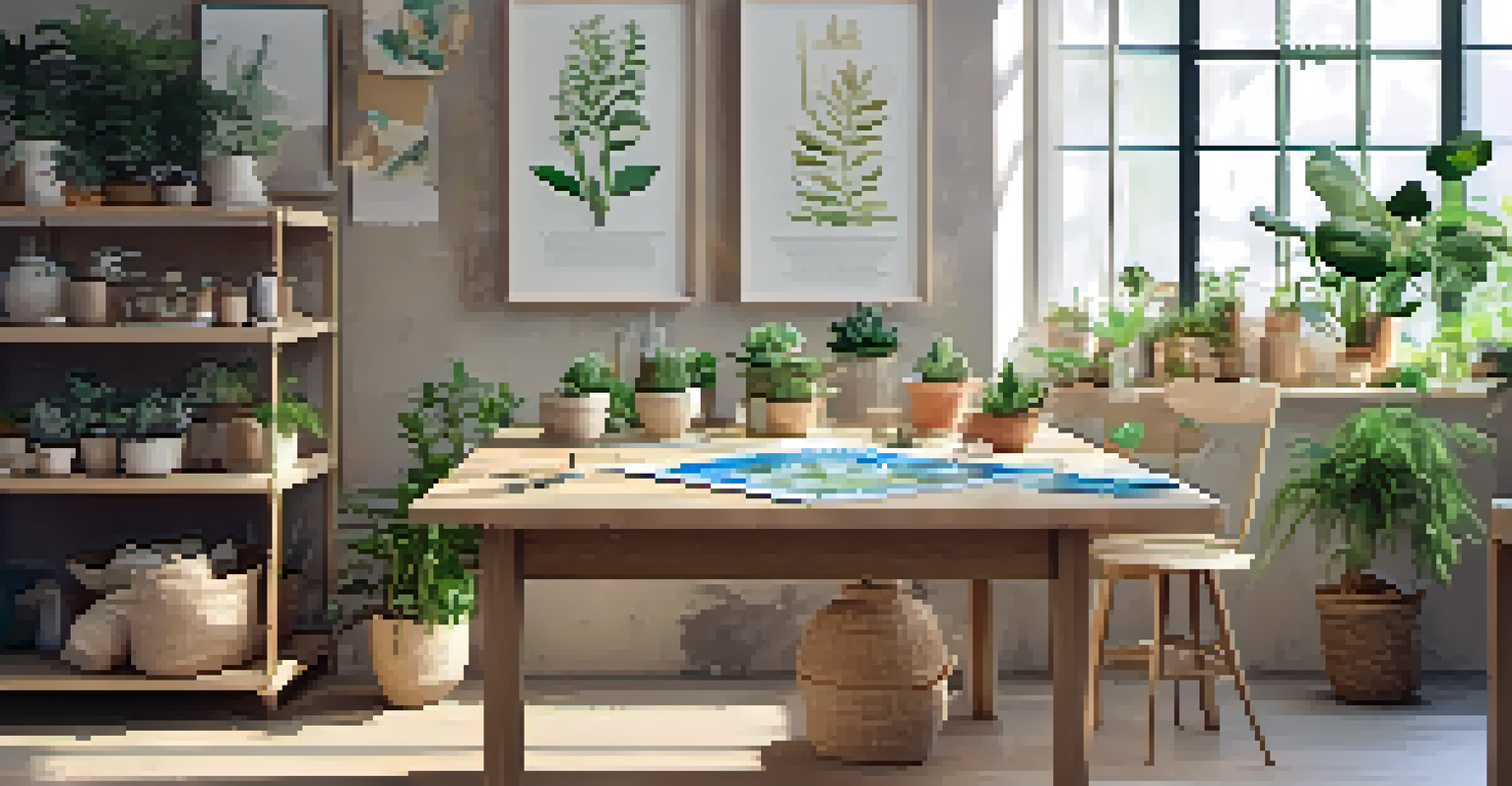How to Choose the Right Adhesives for Collage Painting

Understanding Different Types of Adhesives for Collage Art
When it comes to collage painting, understanding the types of adhesives available is crucial. Each adhesive has unique properties that can affect your artwork's longevity and appearance. From glue sticks to liquid adhesives, knowing the right option can make a significant difference in your project.
Art is not freedom from discipline, but disciplined freedom.
For instance, glue sticks are great for lightweight materials and quick fixes, while liquid glues can provide a stronger bond for heavier items. However, some liquid adhesives may warp paper, so it's essential to choose wisely. The type of materials you'll be working with will guide your adhesive choice.
Ultimately, experimenting with different adhesives can help you discover what works best for your artistic style. Consider keeping samples of various types on hand to see how they interact with your chosen materials.
Consider Your Collage Materials and Their Needs
The materials you plan to use in your collage will play a vital role in your adhesive selection. Whether you're working with paper, fabric, or found objects, each material may require a different adhesive approach. Understanding the characteristics of these materials is key to a successful collage.

For example, if you're incorporating heavy cardstock or thicker elements, a stronger adhesive like PVA glue might be necessary. On the other hand, lighter papers are best suited for glue sticks or spray adhesives. By considering the weight and texture of your materials, you can ensure a secure bond.
Choose the Right Adhesive Type
Different adhesives, from glue sticks to liquid glues, affect your collage's durability and appearance, making it essential to select the right one based on your materials.
Also, remember that some materials may be sensitive to certain adhesives, leading to discoloration or damage. Testing a small area first can save you from potential mishaps and ensure your collage looks its best.
The Importance of Drying Time and Workability
Drying time can significantly impact your collage painting process, especially if you're working on multi-layered pieces. Some adhesives dry quickly, allowing for fast assembly, while others take longer, giving you time to reposition elements. Knowing how long each adhesive takes to dry can help you plan your workflow effectively.
The only way to do great work is to love what you do.
For instance, if you prefer a more forgiving approach, opt for a repositionable adhesive. This type allows you to adjust your pieces before the glue sets completely. On the contrary, if you’re looking for a quick finish, fast-drying adhesives can be beneficial, but be prepared for a more permanent bond.
Finding the right balance between drying time and workability will help you create your collage without frustration. Consider your artistic style and project requirements when making this choice.
Understanding the Finish: Matte vs. Glossy Adhesives
The finish of your adhesive can dramatically affect the overall look of your collage painting. Matte and glossy adhesives offer different aesthetic results, so it's important to consider which aligns with your artistic vision. A matte finish can create a subtle, understated appearance, while glossy finishes can add vibrancy and shine.
For example, if you're working with photographs or colorful papers, a glossy adhesive can enhance the colors and make them pop. Conversely, if you're aiming for a more vintage or muted look, matte adhesives might be the way to go. Think about how the finish will complement your materials and overall composition.
Consider Material Characteristics
The weight and texture of your materials, such as paper or fabric, will dictate which adhesive works best for a secure bond.
Additionally, some adhesives offer a range of finishes, allowing you to choose based on your project. Experimenting with both options can help you achieve the desired effect in your collage.
Environmental Considerations: Non-Toxic and Eco-Friendly Options
As artists, being mindful of our environmental impact is increasingly important. Fortunately, there are many non-toxic and eco-friendly adhesive options available that can support your collage painting without harming the planet. These adhesives are often made from natural ingredients, making them safer for both you and the environment.
For instance, many craft stores now carry water-based glues and adhesives that are free from harmful chemicals. These products provide a safer workspace and often have a lower environmental footprint. Plus, using eco-friendly options can inspire others in the art community to think sustainably.
When selecting an adhesive, look for certifications or labels that indicate non-toxicity and eco-friendliness. By choosing environmentally conscious products, you can create beautiful art while caring for the planet.
Testing Adhesives: A Smart Strategy for Success
Before committing to an adhesive for your collage painting, testing it out on a small scale can save you time and disappointment. By trying different adhesives with your specific materials, you can observe how they interact and their effectiveness. This step can reveal potential issues, such as warping or discoloration, before you start your main project.
For example, you might create a small sample collage using various adhesives to see which one holds best over time. This experimentation can also help you understand how long it takes for each adhesive to dry and how workable they are. It's a great way to learn and adapt your approach.
Test Adhesives for Best Results
Testing various adhesives on a small scale can reveal how they interact with your materials and help avoid issues like warping or discoloration.
Ultimately, taking the time to test adhesives can enhance your confidence and ensure that your final artwork meets your expectations. It’s all about finding the right fit for your unique artistic process.
Storage and Longevity: Keeping Your Adhesives Fresh
Proper storage of your adhesives is crucial to maintaining their effectiveness and longevity. Adhesives can dry out, thicken, or separate if not stored correctly, which can lead to frustrating results in your collage projects. Understanding how to store your adhesives can save you money and ensure that you always have a reliable option on hand.
For instance, many adhesives should be kept in a cool, dry place and sealed tightly after each use to prevent air exposure. If you use squeeze bottles, ensure the nozzle is clear and free from dried glue. Taking simple steps like these can significantly extend the life of your adhesives.

Additionally, regularly checking the condition of your adhesives can help you avoid surprises during your creative process. Keeping track of expiration dates and signs of degradation will ensure that you can continue to create without interruption.